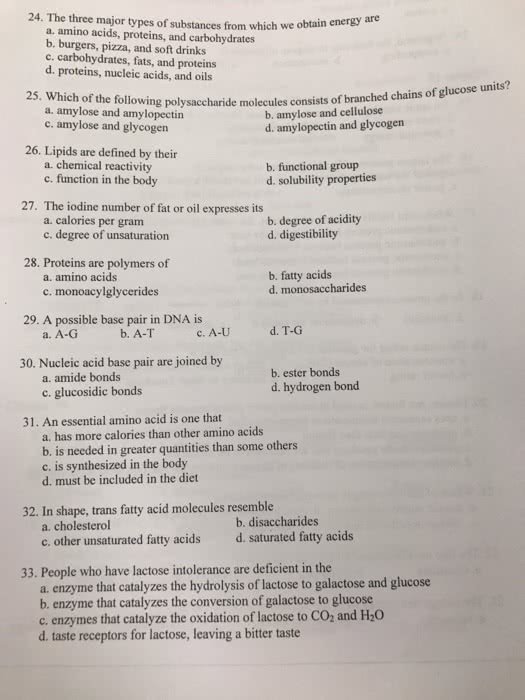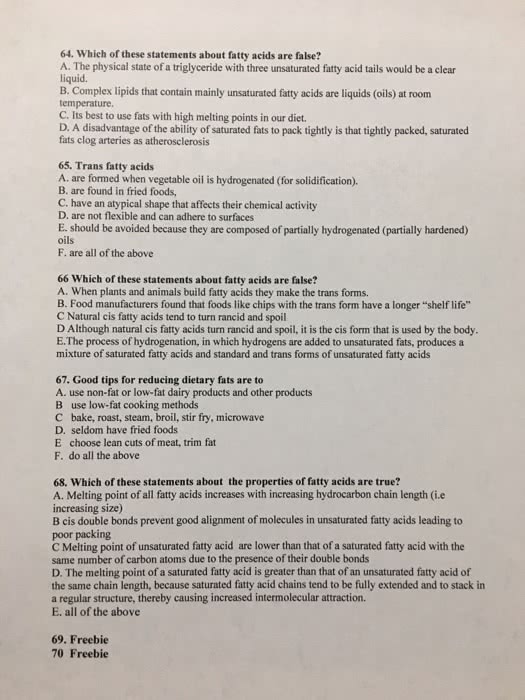NUTR 1010 Lecture Notes - Lecture 9: Corn Oil, Margarine, Trans Fat
Document Summary
Get access


Related Documents
Related Questions
| Name of Macronutrient | Subtypes of Macronutrient (Weâve listed the names to provide a framework, but explain what each means) | Food Sources (list food sources broken down by subtype of macronutrient) | Major Functions (make sure to explain each) | Recommended Intake (for you â include your demographic) | Related Health Concerns (be specific regarding how the macronutrient contributes to this health problem) |
| Carbohydrates | Monosaccharides Sweet, colorless, crystalline structure which contain one (mono) molecule of sugar (saccharide), with the basic CnH2nOn makeup: are the glucose and Fructose âGalactose; Sucrose, maltose and lactose Polysaccharides is a monosaccharaides bonded togehte (wikibooks). Which are simple? Monosaccharides Which are complex? Polysaccharides Both Monosacharides and Polysaccharides can be good healthy diet( wikkibooks). | Monosaccharides: glucose is found on some fruits, vegetable and honey; fructose is found in fruits, honey and corn syrup ( wikkibook) Polyasacchariders Starch (cereal grains such as wheat, oats, barley, corn rice and their products; cellulose which acts as a dietary fiber(soluble â barley-oats,rye) insoluble fiber whole grains ready to eat cereals and others) and glycogen â a storage form of glucose in the liver and muscle ( Non digestable dietary â cellulose â whole grains- green leatu vegetable; pectin- fruits, carrots, sweet potatoes. Exemple of digestable food â shellfish, animal liver.(nutrient.review,n.d) | |||
| Proteins | Essential amino acids Nonessential amino acids | ||||
| Lipids | Triglycerides Phospholipids Sterols |
Charts and tables are tools we use in science to break down information analytically and present data in an organized manner. It is a beneficial strategy for learning about and organizing scientific material, which we will be using often in this class. Make sure that you are detailed, thorough, and specific in your responses. Explain yourself clearly. Do not list a word or brief phrase without explaining what it means. For example, if you list diabetes for carbohydrates, make sure you explain how carbs are associated with diabetes. Don't leave the reader to make that connection for you. Also, make sure you provide APA-style references for each of your so

